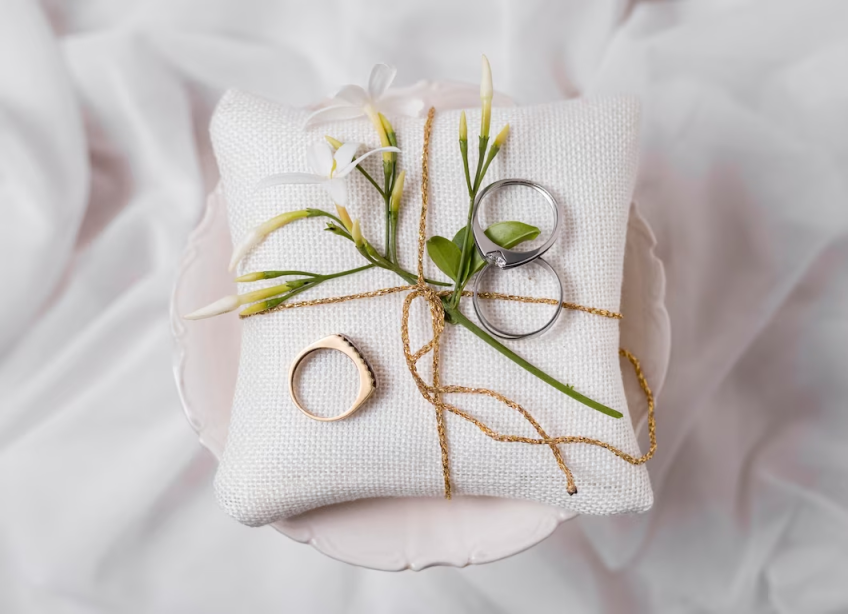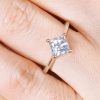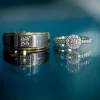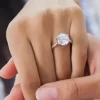Your wedding ring serves as a reminder of that special day as well as of your love and devotion for your spouse. It can be stressful to select the ideal wedding band, but it doesn’t have to be. In this blog, we will discuss how to choose the perfect wedding ring for you by understanding the cut, clarity, and carat weight. A Glasgow wedding ring specialist can help you find the perfect wedding ring for your special day.
Before we dive into the details of cut, clarity, and carat weight, let’s talk about why choosing the right wedding ring is so important. You will wear your wedding band every day for the rest of your life, so it’s crucial to pick one that you adore and complements your way of life. Choosing a band that matches your engagement ring, if you have one, is also crucial. Your wedding ring and engagement ring should look beautiful together and not clash.
Now, let’s talk about the 4Cs of diamond quality: cut, clarity, color, and carat weight. These qualities are what determine a diamond’s worth and quality.
Cut
Cut is perhaps the most important of the 4Cs when it comes to choosing a diamond wedding ring. The cut of a diamond determines how much it sparkles and how brilliant it looks. A diamond that has been properly cut will shine and sparkle more than one that has not. The most common diamond cuts are round, princess, oval, and emerald, but there are many other shapes to choose from. Round diamonds are the most popular and tend to have the most sparkle, but each shape has its own unique beauty.
Clarity
Clarity is also an important factor to consider when choosing a diamond wedding ring. The quantity and amount of defects or flaws within a diamond are referred to as its clarity. Inclusions can be tiny crystals, feathers, or other minerals that are trapped inside the diamond during its formation. A diamond is more precious the fewer inclusions it has. However, most inclusions are not visible to the naked eye, so you may be able to save some money by choosing a diamond with slightly lower clarity.
Color
Color is another important factor to consider when choosing a diamond wedding ring. The most valuable diamonds are completely colorless, but there are many other colors to choose from. The GIA color grading scale ranges from D (completely colorless) to Z (light yellow or brown). The color of a diamond can affect its price, with completely colorless diamonds being the most expensive.
Carat weight
Carat weight is the final factor to consider when choosing a diamond wedding ring. A diamond’s weight is measured in carats, with one carat equalling 0.2 grammes in weight. Larger diamonds are generally more valuable than smaller ones, but the value of a diamond also depends on its cut, clarity, and color.
You don’t have to select a diamond when picking out a wedding band. Other kinds of gemstones, such sapphires, rubies, or emeralds, are frequently chosen. These gemstones come in a variety of colors and can be just as stunning as diamonds. Plus, they may be more affordable than diamonds, allowing you to get a larger stone for your budget.
Now that you understand the 4Cs of diamond quality, you can start thinking about which factors are most important to you when choosing a wedding ring. Do you want a ring that sparkles and shines with a lot of fire and brilliance? If so, you might want to focus on finding a diamond with an excellent cut. Are you looking for a ring that is completely flawless, or are you okay with a few small inclusions that are not visible to the naked eye? If you are on a budget, you might want to choose a diamond with a lower clarity grade. Do you prefer a specific color, such as a warm yellow or a cool blue? Gemstones like sapphires or rubies may offer more variety in terms of color.
Setting of Wedding Ring
Another important consideration when choosing a wedding ring is the setting. The setting of a ring can have a big impact on its overall appearance and how comfortable it is to wear. There are many different types of settings to choose from, including prong, bezel, pave, channel, and tension. Each setting has its own unique look and feel, and some may be more secure than others.
Metal Rings
The metal of the ring is also an important consideration. The most popular metals for wedding rings are platinum, white gold, yellow gold, and rose gold. Platinum is the most durable and expensive, while gold is a more affordable option that comes in a variety of colors. Some people may also choose alternative metals, such as titanium or tungsten, for their wedding rings.
When choosing a wedding ring, it’s important to consider your lifestyle and how the ring will fit into it. If you have an active lifestyle or work with your hands, you may want to choose a more durable metal and a setting that protects the stone. If you have a job that requires you to wear gloves, you may want to choose a ring with a lower profile or no stones at all.
It’s also important to consider the style of the ring and how it will complement your engagement ring, if you have one. Some people may choose a matching set of rings that are designed to be worn together, while others may choose rings that have different styles but still look beautiful together.
Hello, I am a professional writer, with more than 10 years of writing experience. I love to write on the science related subjects and share knowledge with my readers. I hope all my reader friends will enjoy my work.



![Choosing a Diamond Ring [A Quick Run Through] Choosing a Diamond Ring](https://www.blushedrose.com/wp-content/uploads/2022/01/sabrianna-XEyyCJKg4yI-unsplash-scaled-100x100.jpg)



